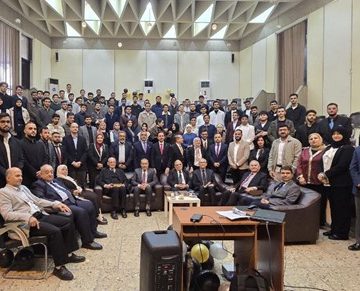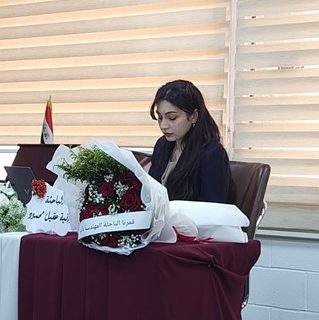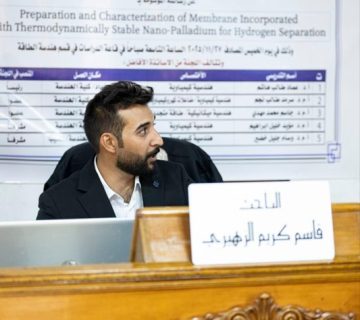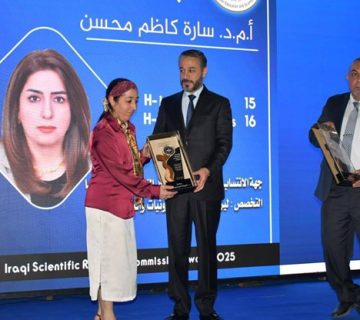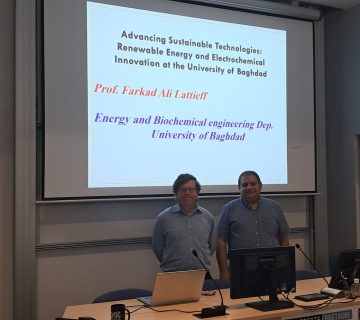The College of Engineering at the University of Baghdad hosted the public defense of the Master’s student Yasser Riyadh Maktoof from the Civil Engineering Department for his thesis titled ” Shear Strength of EPS Lightweight Fiber-Reinforced concrete beams” on Tuesday, September 10, 2024, in Dr. Khalid Shaker Hall in the Civil Engineering Department, under the supervision of Assistant Professor Dr. Rafea Mahmoud Abbas.
The aim this study, the mechanical properties of various self-compacting concrete (SCC) mixtures with different proportions of EPS and fibers were investigated and evaluated. To examine the shear resistance behavior of EPS fiber-reinforced concrete beams, eleven lightweight concrete beams reinforced with EPS fibers were manufactured and tested. The samples were divided into two main groups, along with an additional reference beam cast without EPS or fibers. Two EPS replacement ratios, 25% and 50% of the coarse aggregate volume, were investigated. Additionally, three types of fibers were incorporated at varying proportions: steel fibers, polypropylene fibers, and glass fibers.
The test results showed that the rheological properties of self-compacting concrete (SCC) were not negatively affected by the EPS content. However, the workability declined below the specified limits when fibers were introduced, indicating reduced ability of fiber-reinforced SCC to flow through narrow spaces. It was found that the mechanical properties of hardened EPS lightweight concrete were reduced due to EPS replacement. A decrease of approximately 37% and 38.7% in compressive and splitting tensile strength, respectively, was observed with 50% EPS content. However, a 33.2% improvement in splitting tensile strength was noted when 1.5% steel fibers were added to the concrete mix. Furthermore, structural lightweight concrete was achieved by incorporating 25% EPS into the mix. However, adding 50% EPS content resulted in lightweight concrete with moderate strength.
The study recommended expanding the research to include the investigation of flexural strength, shear strength, and the performance of EPS-LWC concrete slabs to fully understand their structural behavior due to the EPS content. It also suggested studying the performance of EPS-LWC using other types of concrete, with a preference for environmentally friendly materials to support environmental protection and reduce construction material waste. Further studies were recommended to examine the impact of EPS particle size or other types of fibers, the structural behavior of EPS-LWC T-beams, and the effectiveness and performance of concrete columns made from EPS-LWC self-compacting concrete. Additionally, the study proposed investigating the strength and performance of EPS-LWC beams and slabs under fire exposure.
After the scientific discussion by the esteemed members of the examination committee, listening to the researcher’s defense, and evaluating the thesis, the researcher was awarded a Master’s degree in Civil Engineering/Structural Engineering.



